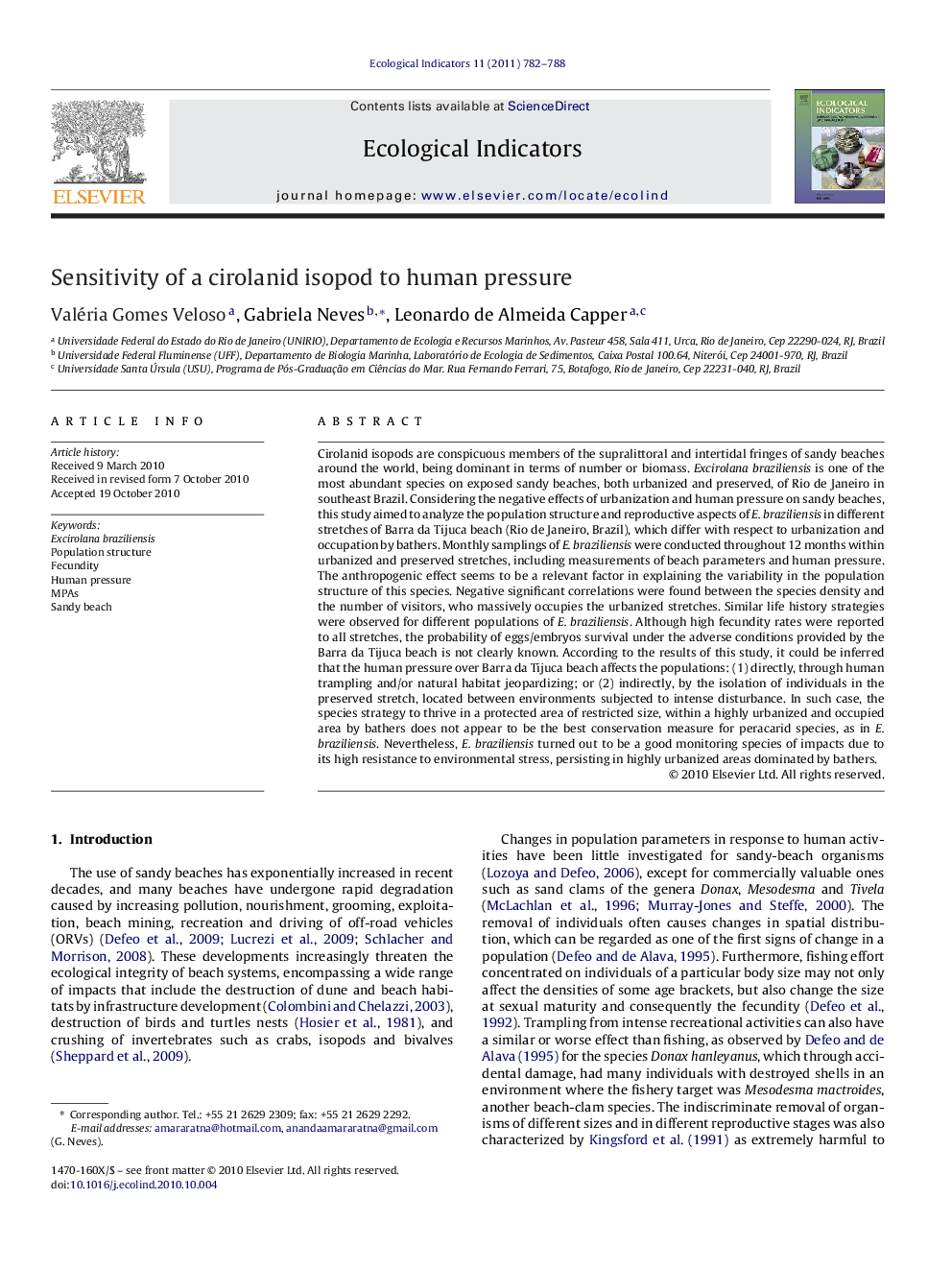| Article ID | Journal | Published Year | Pages | File Type |
|---|---|---|---|---|
| 6295678 | Ecological Indicators | 2011 | 7 Pages |
Abstract
Cirolanid isopods are conspicuous members of the supralittoral and intertidal fringes of sandy beaches around the world, being dominant in terms of number or biomass. Excirolana braziliensis is one of the most abundant species on exposed sandy beaches, both urbanized and preserved, of Rio de Janeiro in southeast Brazil. Considering the negative effects of urbanization and human pressure on sandy beaches, this study aimed to analyze the population structure and reproductive aspects of E. braziliensis in different stretches of Barra da Tijuca beach (Rio de Janeiro, Brazil), which differ with respect to urbanization and occupation by bathers. Monthly samplings of E. braziliensis were conducted throughout 12 months within urbanized and preserved stretches, including measurements of beach parameters and human pressure. The anthropogenic effect seems to be a relevant factor in explaining the variability in the population structure of this species. Negative significant correlations were found between the species density and the number of visitors, who massively occupies the urbanized stretches. Similar life history strategies were observed for different populations of E. braziliensis. Although high fecundity rates were reported to all stretches, the probability of eggs/embryos survival under the adverse conditions provided by the Barra da Tijuca beach is not clearly known. According to the results of this study, it could be inferred that the human pressure over Barra da Tijuca beach affects the populations: (1) directly, through human trampling and/or natural habitat jeopardizing; or (2) indirectly, by the isolation of individuals in the preserved stretch, located between environments subjected to intense disturbance. In such case, the species strategy to thrive in a protected area of restricted size, within a highly urbanized and occupied area by bathers does not appear to be the best conservation measure for peracarid species, as in E. braziliensis. Nevertheless, E. braziliensis turned out to be a good monitoring species of impacts due to its high resistance to environmental stress, persisting in highly urbanized areas dominated by bathers.
Related Topics
Life Sciences
Agricultural and Biological Sciences
Ecology, Evolution, Behavior and Systematics
Authors
Valéria Gomes Veloso, Gabriela Neves, Leonardo de Almeida Capper,
